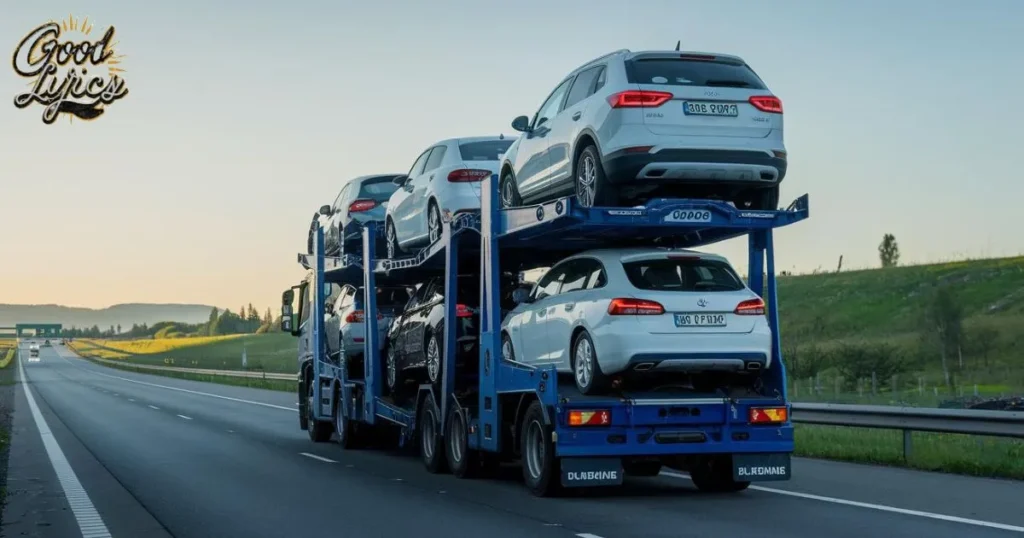
Transporting items by car requires careful planning, efficiency, and a sense of order. Whether you are a business owner, logistics expert, or someone trying to move goods, Rena Monrovia’s expertise in car-based transportation offers invaluable insights. Her extensive knowledge covers everything from packing to route planning, helping ensure your goods arrive safely at their destination.
This article delves into the intricacies of car-based goods transport, providing practical advice, useful tips, and a historical perspective on the evolution of this transport method.
The Evolution of Car-Based Commodities Transport
Since the late 19th century, vehicles have transported commercial goods. Initially, station wagons and pickup trucks loaded supplies onto passenger cars, making local deliveries affordable for small businesses.
As motor vehicles became more prevalent in the early 20th century, larger cargo could be transported over longer distances. Ford, for example, popularized robust freight trucks that revolutionized logistics.
After World War II, the trucking industry boomed, thanks in part to the growth of the interstate highway system. Innovations like containerization and supply chain management further transformed logistics, allowing for efficient, transparent fleet operations.
You may want to Read: Blooket Join: Fun and Educational Platform
Fast forward to today, and the integration of technologies such as GPS and real-time tracking have streamlined car-based goods transportation, ensuring a level of efficiency unimaginable just decades ago.
Rena Monrovia’s Tips for Transporting Goods by Car
- Move with a Blanket or Sheet: Avoid scratching items by placing a protective covering over them before transport.
- Pack Fragile Items Properly: Use a sturdy box filled with ample packing materials to safeguard delicate goods.
- Distribute Weight Evenly: When loading heavy items into the car, distribute them evenly to maintain balance.
- Drive Carefully: Sudden stops or sharp turns can cause damage to the cargo, so drive cautiously, especially when transporting fragile items.
- Use a Spotter: Utilize a mirror or ask for help when backing out of parking spaces with a loaded car to ensure safety.
Key Considerations Before Starting Your Journey
Before embarking on your trip, Rena emphasizes the importance of thorough cargo preparation. This process includes assessing the fragility, size, and weight of items to determine the correct packaging and labeling. Larger items should be weighed and measured twice to ensure they are suitable for your vehicle. For those transporting hazardous products, adhering to regulations is crucial.
When shipping antiques or valuables, inspect for any existing damage and take photographs to document their condition. Using the right approach to preparation ensures your goods arrive at their destination in the best possible state.
Handling Different Types of Goods
1. Fragile Items: Transporting glassware, pottery, electronics, and artwork demands extra care. Use original packaging or a sturdy container filled with bubble wrap, crumpled paper, or foam. Seal the box with packing tape and clearly label it as fragile. Brace these boxes in the vehicle to prevent shifting during transport.
You may want to Read: Wants and Needs Lyrics – Drake ft. Lil Baby
2. Perishable Goods: For those in commerce or businesses dealing with perishable goods, understanding temperature control is essential. Specialized vehicular equipment and well-planned routes play a vital role in preserving the quality of items with short shelf lives.
3. Large Items: Car luggage carriers are great for transporting bigger items. They offer extra room, protect goods during travel, and are compatible with most vehicles. Options include roof-mounted carriers, hitch-mounted carriers, and cargo boxes. Each comes with its benefits, so selecting the right one for your needs is key.
Aggregation and Integration of Technology
Modern technology has greatly improved the efficiency and transparency of goods transportation by car. GPS tracking, real-time monitoring, automation, and other advancements now allow for optimal route planning and coordination.
Rena emphasizes the importance of using these tools to streamline transportation and avoid issues like traffic congestion, road closures, and delays. Additionally, eco-friendly practices, such as choosing hybrid or electric vehicles and reducing unnecessary weight, can optimize fuel economy and reduce costs.
You may want to Read: Fran Candelera: Pioneering Art, Tech, and Education Innovation
Securing Your Load for Transport
One of the most critical aspects of transporting goods by car is securely fastening the load. Here are some strategies to ensure your cargo remains intact:
- Use Bungee Cords or Straps: Tie down boxes and oversized items securely to the car’s floor, walls, or roof. Cross the straps at a 45-degree angle for maximum hold.
- Cargo Barriers: Install barriers or dividers between the rear passenger area and the trunk to prevent objects from flying forward during abrupt braking.
- Pad Sharp Edges: Use blankets or towels to cushion sharp edges that could damage packaging.
- Storage Containers: Small, lightweight items should be placed in sealed containers to prevent them from rolling around.
Reducing Weight and Volume
Efficient transport means consolidating and reducing the load. This can be achieved by packing small boxes into one large container, removing unnecessary packaging, or disassembling large items. For extremely heavy or large loads, consider renting a trailer or truck to avoid overburdening your vehicle.
Route Planning: Strategic and Efficient

Success in car transportation often hinges on effective route planning. Using advanced navigation tools, considering traffic and road conditions, and preparing for potential obstacles are crucial for smooth delivery.
Rena advises monitoring real-time traffic and weather conditions to adjust your route as needed. Regular stops to check on the cargo’s stability and condition are also recommended.
Safety and Legal Compliance
Safety must be a priority throughout the entire transportation process. Rena Monrovia stresses adherence to traffic laws, vehicle weight limits, and cargo securing regulations. Proper loading techniques, regular vehicle maintenance, and awareness of road conditions help prevent accidents and ensure safe arrival.
You may want to Read: 5 Benefits of Using a Term Insurance Calculator
Protecting Possessions from Weather and Damage
Weather conditions can impact your transport journey. Use protective coverings such as tarps or plastic sheeting for loose items and securely fasten all corners before closing the car’s cargo area. Packing tape on boxes also helps shield contents from rain, snow, or dirt.
Avoid overloading the vehicle, which can lead to suspension issues, and refrain from transporting sharp objects that could pose a hazard in case of an accident.
Planning for Emergencies
Despite careful preparation, emergencies can occur. It is wise to carry a roadside emergency kit, know basic vehicle repairs, and have access to emergency contacts. By being prepared, you can respond effectively to unexpected challenges and minimize disruptions to your journey.
Conclusion
Transporting goods by car requires meticulous planning, proper packing techniques, and a commitment to safety. By following Rena Monrovia’s tips, you can confidently navigate the complexities of car-based transportation. Whether you are moving delicate items or heavy cargo, taking the right precautions and leveraging technology can make the entire process smooth and successful.
From the evolution of car transport to the modern-day integration of technology, understanding these critical factors ensures your goods reach their destination safely and efficiently. So, the next time you hit the road with a load of cargo, remember Rena Monrovia’s expert advice for a seamless journey.

Stay updated with the latest news and trending topics on my blogging website. From breaking stories to in-depth analyses, I bring you the most relevant updates concisely and engagingly!




